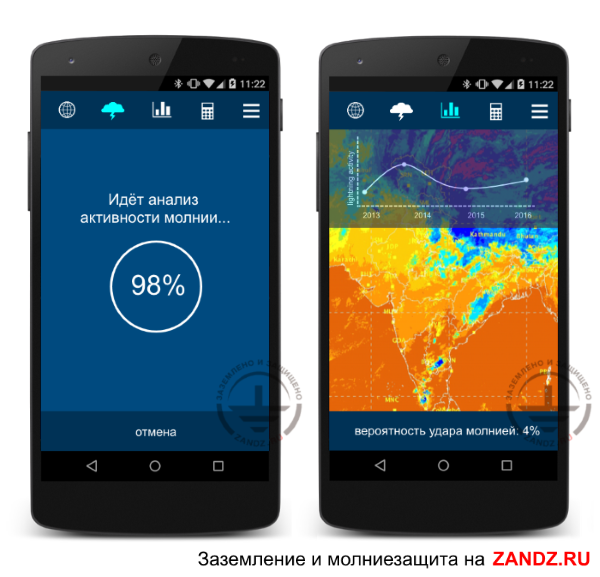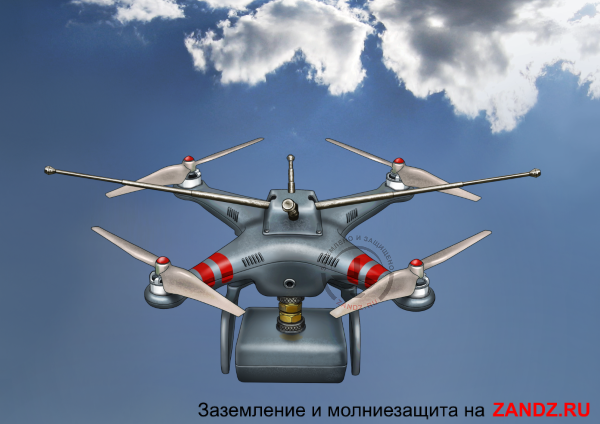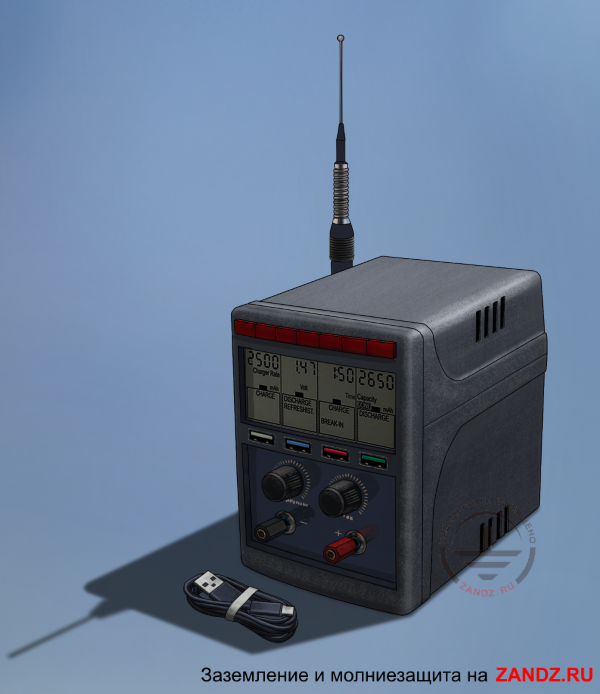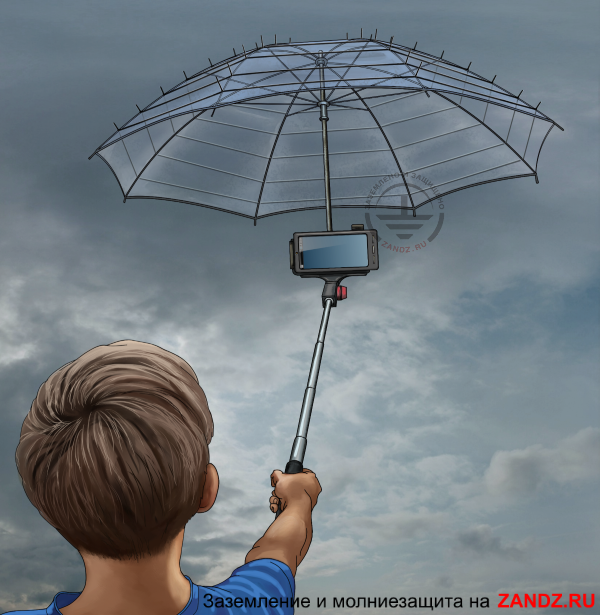Dear friends!
Today is the 1st April, a Friday, which means that it is time to finish all of the things you planned for the week and unwind a little bit. To help you do this, we have compiled a selection of interesting technologies and devices that will be useful for anyone who works with grounding and lightning protection!
Application for lightning activity detection Lightning Strike Detector App
In these times when smartphone applications are widely used, it is quite inevitable that a program for designing and calculating grounding and lightning protection would appear. For example, the application Lightning Strike Detector App detects the possibility of a lightning strike hitting your facility. The application uses a built in GPS-sensor to determine the location, connects to the weather server and receives past and future (forecast) weather data for your specific region. Taking into account this data, the program calculates the possibility of a lightning strike above the location.

Application for lightning activity detection Lightning Strike Detector App (click here to zoom in)
In addition, when data about the facility is entered, the program can determine the lightning protection class and calculate the construction of external lightning protection and grounding for it. Such characteristics includes the dimensions of the building (length, width, height) and data on surrounding objects (for example, their height). Using location data, the application can refer to a database and receive information on the type and resistance of the soil, which is also necessary for grounding calculations.
This application will be useful for single-family home owners, as well as electrical-installation companies and designers
Lightning Protection Drone

Lightning Protection Drone (click here to zoom in)
A unique device that corresponds to today's technology, the Lightning Protection Drone flies above a facility and stops lightning strikes during a storm (see animation on this page). The drone is of a modular type and allows the connection of traditional lightning rods of a medium length to make a unit that covers the area that is to be protected. The drone has a transformer inside that transfers part of the lightning current received by the drone to a "power bank", i.e. the battery of the device. That is why the drone is completely autonomous and does not need to be charged. Of course, no lightning protection will work without grounding. For that purpose, the drone is equipped with a container of special low-resistance filler that is used as grounding. When lightning is intercepted, its current is transferred to this container via down conductors.
First of all, the Lightning Protection Drone is an excellent solution to protect temporary or mobile objects from a lightning strike, when installation of a classical lightning protection system is irrational, for example, during stops while travelling in the mountains.
Phone charging device powered by lightning Lightning-charge box for cellphone

Lightning-charge box for cellphone (click here to zoom in)
A small device made of a unique material that is installed on the house's roof. It is equipped with telescopic lightning rods to receive lightning strikes. The device is made to secure the energy from lightning inside its secret parts, which do not need any grounding. In this way, the lightning current stays inside, so there is no need to transfer it to ground. There are also no overvoltages or other secondaries. The accumulated energy is used for charging a mobile phone via USB cable. The number of mobile phone charges depends on the characteristics of the lightning, but is often sufficient for numerous charges. Due to its sizes and design, it is easy to carry the device around in a pocket or a bag. Please note that Lightning-charge box is not designed to protect a building from lightning! It is to be used for mobile phone charging only, as this is what its operation is aimed at and nothing more should be expected. The device does not cause any negative consequences related to the dangers of lightning.
Selfie stick/lightning rod Umbrella Selfie Stick

Selfie stick/lightning rod Umbrella Selfie Stick (click here to zoom in)
Perhaps the most unusual, but a vitally important device! Selfies are taken everywhere and in any weather conditions, but it is dangerous to use a conductive device during a storm. Moreover, there is a belief that mobile phones attract lightning. In order to protect selfie-lovers from a possible lightning strike while using a selfie stick, a unique solution has been designed - the Umbrella Selfie Stick (USS). The USS is a device made of two parts: a traditional selfie stick and a dissipation array umbrella. The mobile phone is attached to a special holder on the selfie stick and connected to it via the headphone jack. Photos and video can be taken using the button on the handle of the selfie stick. The dissipation array umbrella protects the phone from rain and snow, as well as isolating the photoshoot location from lightning due to the numerous needle-shaped electrodes that lower the current of a corona discharge. This device will be useful for those who are fond of taking photos in open spaces.
Of course, all these technologies and devices are not real and were made up by us as a joke for April's Fools Day, nevertheless they may exist someday.
Nowadays, there are equally outstanding technologies and devices for grounding and lightning protection that are already widely used around the world:
- electrolytic grounding, which is used in locations with complex high-resistance soils, like permafrost and sand, and is exponentially more efficient than traditional modular grounding;
- Dissipation array device (dissipation array system). Unlike the classic lightning protection system which intercepts lightning and transfers its current into the soil, a dissipation array device prevents the formation of lightning above the protected area, thereby eliminating the possibility of a direct strike and protecting it from secondary effects;
- The ThorGuard lightning warning system, analyzes the atmosphere in a radius of up to 15 kilometers and warns about coming storms.
Now, in order to calculate grounding and lightning protection, you just need to write to the technical experts at ZANDZ, who will be happy to help you with any question!
Please write in the comments on this page which devices and technologies for the design and installation of lightning protection and grounding systems you would like to read about.

